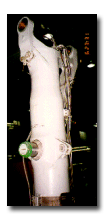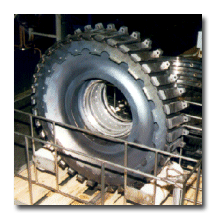
Industry Partners: Boeing, Pratt & Whitney
Objectives:
-
To provide a computational tool for development, evaluation, or optimization of contact UT of aviation components to allow inservice inspections to be rapidly implemented when durability issues arise
-
To develop contact transducer models (flaw and noise predictions) for use in probe design and technique development/evaluation, including tolerance variation assessment
-
To work with industry partners to validate, model and develop usable software tools in typical engineering environments
Approach:
- Define typical applications
- Develop tool that
considers component geometry, (non-parallel surfaces, surface curvature,
defect orientation, defect location, flaw morphology), surface roughness,
and material effects (noise, attenuation)
- Develop a tool for probe design, technique evaluation, and tolerance variation that addresses wedge coupling, beam shape, multiple sound paths, multiple UT modes (i.e. corner trap, longitudinal reflection, shear, tip diffraction, and surface wave)


Service induced cracking is often an issue in complex geometrical features such as lugs, attachement points, and other complex components.
Products:
- Computational tool
for use in inspection
design and optimization
Links:
Copyright © 2002
For more information about CASR please contact:
Lisa Brasche
Iowa State University
casr@cnde.iastate.edu

